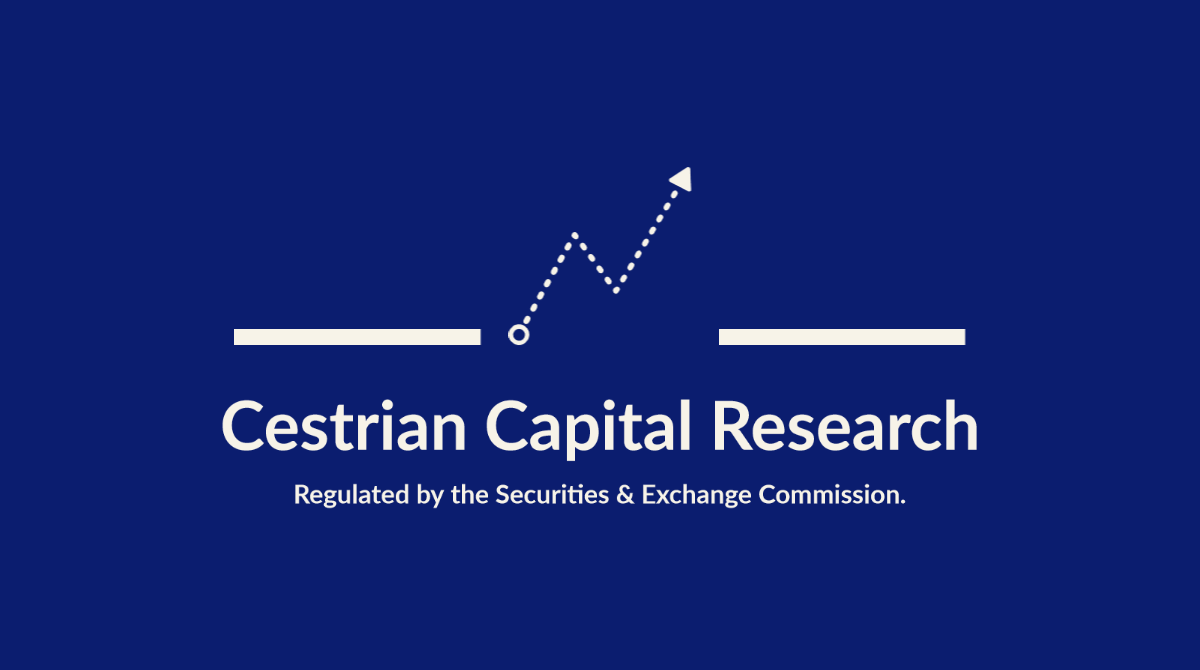Market On Open - Thursday 14 September
DISCLAIMER: This note is intended for US recipients only and, in particular, is not directed at, nor intended to be relied upon by any UK recipients. Any information or analysis in this note is not an offer to sell or the solicitation of an offer to buy any securities. Nothing in this note is intended to be investment advice and nor should it be relied upon to make investment decisions. Cestrian Capital Research, Inc., its employees, agents or affiliates, including the author of this note, or related persons, may have a position in any stocks, security, or financial instrument referenced in this note. Any opinions, analyses, or probabilities expressed in this note are those of the author as of the note's date of publication and are subject to change without notice. Companies referenced in this note or their employees or affiliates may be customers of Cestrian Capital Research, Inc. Cestrian Capital Research, Inc. values both its independence and transparency and does not believe that this presents a material potential conflict of interest or impacts the content of its research or publications.
Opex -1
As we mentioned in yesterday's note, options expiry is upon us Friday, and it's a big one. Four times per year, around each quarter end, we hit triple witching (which used to be quadruple witching but there is less witchitiness since US single-stock futures ceased trading in 2020). On triple witching dates, index futures, index options, and single-stock options all hit expiry. Here's the CBOE's 2023 calendar (you can open a full-page version, here).

If you've been a member here for a while now, or otherwise been around the block a couple times, you know the drill. But let's rehearse it here, because being prepared is never a bad thing.
- Derivatives expire Friday 15 September. In the simplified way of thinking about opex, derivatives have been purchased by investors and sold by dealers.
- Those dealers' line of business is not to make money on a directional bet, instead to make money on the bid/ask spread.
- To the extent dealers have sold bullish derivatives (eg. call options), they have taken on a bearish position; that needs to be hedged with a countervailing bullish position (using the underlying stocks and /or futures).
- To the extent dealers have sold bearish derivatives (eg. put options), they have taken on a bullish position; that needs to be hedged with a countervailing bearish position (using the underlying stocks and /or futures).
- When the derivatives expire, the dealer is left only with the hedging instrument - that hedge needs to be unwound. If the dealer is hedged long, they need to sell those long positions. If hedged short, the dealer needs to cover those short positions (ie. buy the underlying).
- The kindergarten version of this is: if investors are very bullish heading into opex, dealers will have hedged long (check the logic above!) and at opex will sell the underlying. So the risk is a spike high and reversal downwards. If investors are very bearish into opex, dealers will have hedged short and at opex will cover that short. So the risk is a spike low and reversal upwards.
Or, nothing much may happen if there isn't a great deal of hedging in place because investors have not taken many directional bets.
In short: plan for volatility around opex dates, particularly the triple-witching opex dates. What the market does in the day before and the days afterwards may be dominated by the impact of those hedges being unwound, and may not be the 'true' direction of the market that follows.
Now, for our paying members only we walk you through our longer- and shorter-term take on the S&P500, the Nasdaq-100, the Dow Jones and the Russell 2000, Bitcoin and Ether.
If you've yet to join this Inner Circle service as a paying member, you can do so right from the button below. We're building up some wonderful testimonials, as you can see here. We hope to see you on the other side soon!
